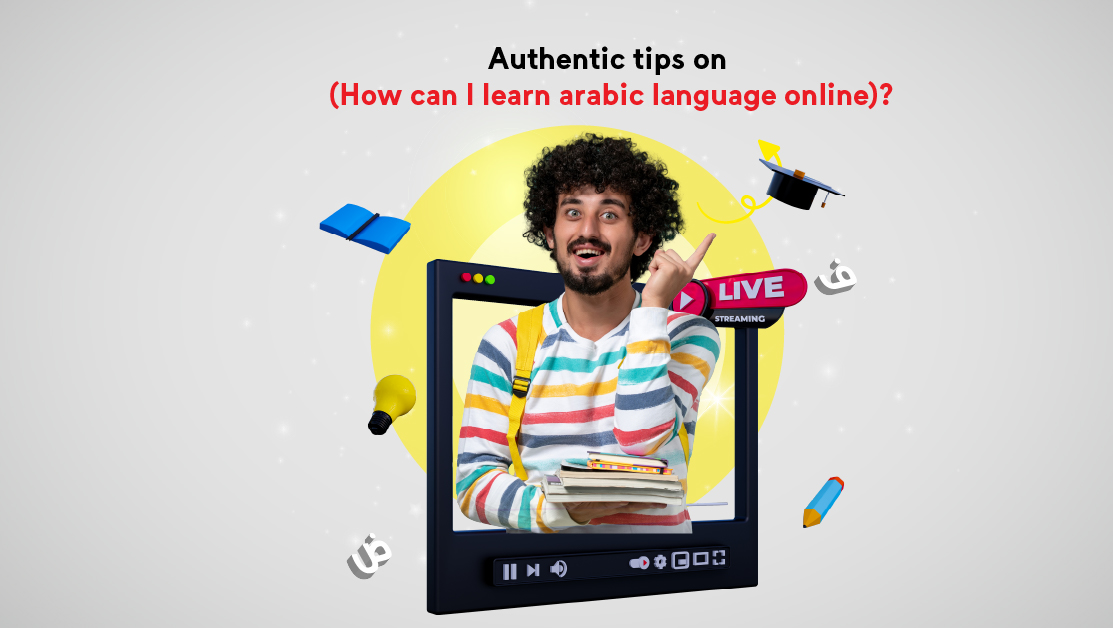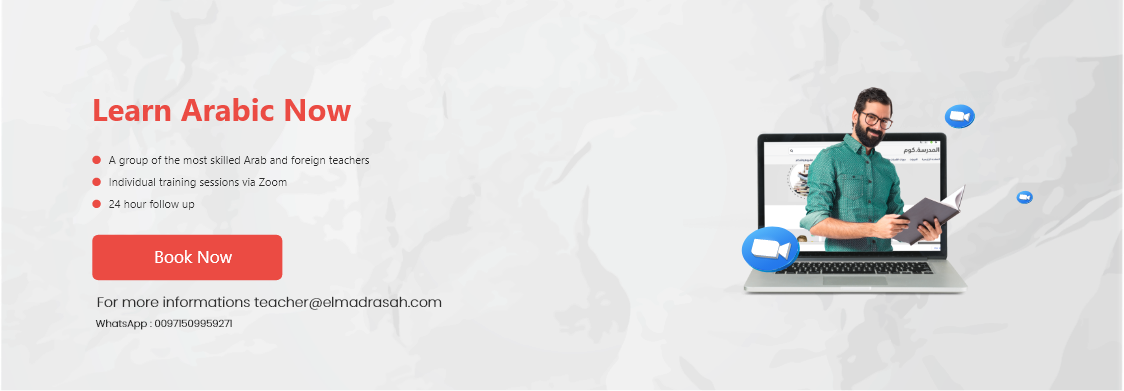
To learn arabic language online, can pose a worthy challenge for non-Arab speakers from various cultural backgrounds. Learning the Arabic language is not effortless, as the grammar and morphologies of the language are more difficult to be counted or understood.
Although the difficulty shows up at the beginning of arabic learning course, the results and the outcomes are worth it.
For non-Arabic speakers, hiring a private tutor will be time savvy. Virtual learning has shown its effectiveness in the past few years. On this basis, we bring to you our autonomous, professional, and outstanding online teaching experience!
Elmadrasah.com is a blessing in disguise for anyone eager to explore and learn arabic language online. We are not just a one of a kind educational platform in the MENA region, but also an inspirational online teaching institution.
We designed our educational program on a precise scientific basis, to cope with any age, any language level, and any purpose you want to learn arabic language online for it!
Embrace special offers and the value of affordable prices. Be an early bird and reserve your one to one course now!
How do you learn arabic language?
-
Start by learning the basics of the arabic language:
The beginning is based on learning the essentials of the language before moving toward the core of the Arabic language and its rules.
The basics of learning represent knowing the alphabets of the Arabic language in writing and pronunciation and linking them to define the objects and concepts.
Likewise, when starting with the letter (A), the learner must know the shape of the letter in writing, at its beginning, middle and end, and use it using open, dashes and below the dash.
Then connect it to something familiar to you, such as an Apple at the beginning of the word, an axe with something in the middle of the word, and a heater at the end of the word, and so on. The rest of the word is measured in alphabet letters.
-
After this stage:
Start to enrich yourself with the largest possible linguistic outcome of the various meanings of vocabularies and words, which will acquire constant learning, and your language skills and speed in acquiring the memorisation.
If the learner falls under the young age group, pictures and movements can be used to indicate the vocabulary to be conveyed to the learners, and there is nothing wrong with teaching the education to large age groups, from non-native speakers, or to illiterate elderly people who could not read and write in their childhood.
- Learner training in reading sentences, short sentences, and moving on to long sentences. This increases the learner’s linguistic outcome on the one hand and allows him to learn how to properly express his thoughts and opinions.
- Use of links:
After the learner has mastered the essential language skills, teach the individual the linking of the different languages from letters, adverbs of time and place, and sign nouns. This skill gives the learner the ability to synthesise words and form useful sentences.
Forming question formulas: This is done with the symbols represented by the initials. Among the frequently asked questions are: Is, When, What, Why, How, Glottal stop and others.
- (rhetoric)
The individual learns the compartments of speech and its types, dualism and plural and their types, the style of conditional and demand, etc., addition, knowledge and indefinite
Books for learning Arabic language
The literature on the Arabic language and its rules varies in a very interesting way, but there are some simplified books that are suitable for learners in the early stages of their journey towards mastering the Arabic language, i.e. writing, which begins with:
The Arabic Language Proficiency Book: Written by Janelvin Wewick and Muhammad Jafar, it begins with teaching Arabic letters, then basic words and terms used in daily life, grammar and many more.
The book “Living Language Ultimate Arabic“. The Book of Alf and Winter: An Introduction to the Letters and Sounds of the Arabic Language: Specialised in teaching words and their correct pronunciation through words and instructions for how to pronounce them by controlling the movement of the lips and tongue, for example; the book also reads both Standard Arabic and Arabic with its Egyptian accent. Nice book, a book suitable for learners in the first stage of language learning.
A grammar reference book for Modern Standard Arabic: It contains 39 units that fall on the seven hundred pages of this book, as it contains all the details of the language from the pronunciation and writing to the rules in their detailed and annotated form, a full explanation that suits the curiosity of the learner, and it also contains an introduction that deals with how to use the Arabic lexicon to extract meanings. Learner assistance along with other content, and other devices.
The book “The First 100 Words in Arabic: A Quick and Easy Guide for Beginners to Demystify Non-Roman Texts” touches on more than 100 Arabic words and phrases with a focus on their explanation and structure to increase my life, along with written exercises and games that help the learner remember information, and reinforce constantly learning new.
The Arabic Usage Book, A Guide to the Modern Use of the Language: It deals with the Standard learn arabic language and its various accents, as well as the linguistic languages related to some words and their classification in the Arabic language, and then provides a full explanation of the rules of the Arabic language from the simplest to the most complex, respectively.
By the end of this article, we seek to enhance your arabic learning course skill, on the perks of our educational programmers and our platform vision. To empower our students and to feed their passion towards learn arabic language online courses.You could also read more on: why is learning arabic for non- arabic speakers worth the time?
















